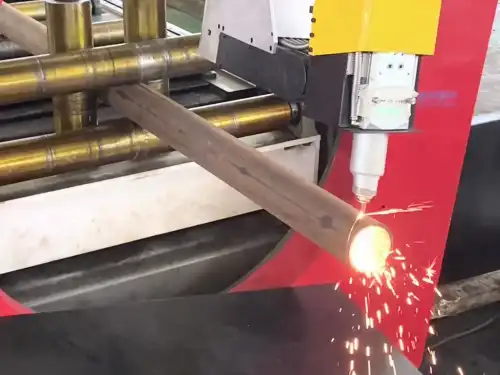Bevel and edge
Thermal cutting processing method
1. Oxidation reaction type
Gas cutting
The cutting area is heated by a preheating flame and a high-purity cutting oxygen flow is fed in. The metal is rapidly oxidized by the reaction of oxygen and iron (or metal), and the slag is removed by the momentum of the high-speed cutting oxygen flow, thereby forming a cutting seam.
Mainly suitable for cutting carbon steel, low-alloy steel and titanium
Oxygen-flux gas cutting
During the gas-cutting process, flux (iron powder, etc.) is supplied to the cutting reaction area through the oxygen flow, and the high-melting-point metal oxide is melted by the combustion heat of the flux. At the same time, the slag and molten metal are removed by the high-speed cutting oxygen flow, thereby forming a cutting seam.
Mainly suitable for cutting high-chromium steel and chromium-nickel stainless steel, cast iron pouring risers and steel slag, etc.

2. Electric arc type
Air carbon arc cutting
The metal is locally melted by the heat of the carbon pole arc, and the molten metal is blown away by the compressed air flow, thereby forming a cutting channel or cutting seam.
Mainly suitable for beveling various metal welding joints, cleaning the root and grooving of the bottom weld, and removing welding defects in the weld. It can also be used to cut non-ferrous metals and their alloys.
MIG arc cutting
The heat of the arc is used to partially melt the metal, and the molten metal is blown away by the airflow of the shielding gas to form a cutting seam.
Mainly suitable for underwater metal cutting and also for seam grooving
Plasma arc cutting
The high temperature of the plasma arc is used to partially melt the metal, and the momentum of the high-speed plasma flame flow is used to remove the molten metal, thereby forming a cutting seam.
Suitable for cutting all metal materials and some non-metallic materials
3. Arc + oxidation reaction
Oxygen-arc cutting
The cutting area is heated by the heat of the arc, the metal is burned by the oxygen flow, and the slag and molten metal are removed to form a cutting seam. Compared with gas cutting, its characteristics are fast cutting speed, but the quality of the cut surface is poor.
Mainly suitable for metal perforation and underwater cutting
4. Light energy
Laser cutting
A cutting method that uses a laser beam with a very small diameter to irradiate the cutting area, causing the material to be cut to sublimate and melt rapidly, thereby forming a slit.
Mainly suitable for cutting thin metals and non-metallic materials such as ceramics and plastics











